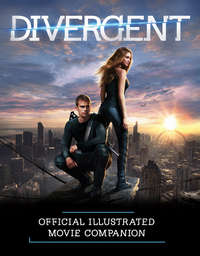
The Divergent Official Illustrated Movie Companion
Lionsgate’s Gillian Bohrer remembers, “The fear sim sequences would be like playing in a sandbox—any director would love the opportunities they offered. But we knew that Neil [Burger] would do more than make them visually striking. He would make audiences feel they were with Tris every step of the way.”
The director of a wide range of movies, from Interview with the Assassin to The Illusionist and Limitless—as well as a writer himself—Neil Burger was already aware of Divergent, and not sure he was eager to make a science fiction film. His feelings changed completely once he read the screenplay. “I liked that the script didn’t have creatures, or sci-fi artificial things in it, or superheroes,” recalls Burger. “And I loved that it was set in the future, but not about futurism. Instead, it uses a futuristic world to explore human nature. The script asks universal questions about loyalty. Tris asks ‘Who am I loyal to? Myself? My family? Or my faction?’ These questions are not unique to young adults, which I like. And Divergent shows a very different kind of future than we’ve seen in other movies.”
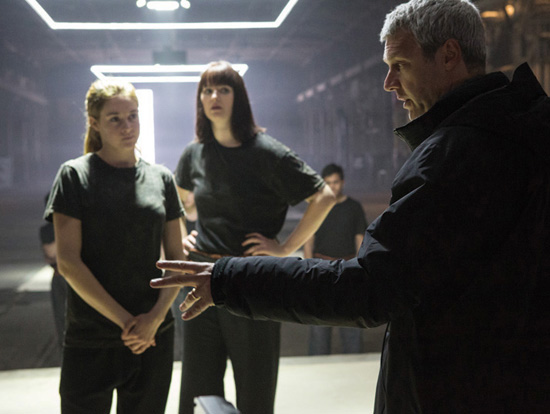
Neil Burger directs Shailene Woodley (Tris) and Amy Newbold (Molly).
A VISION FOR DIVERGENT
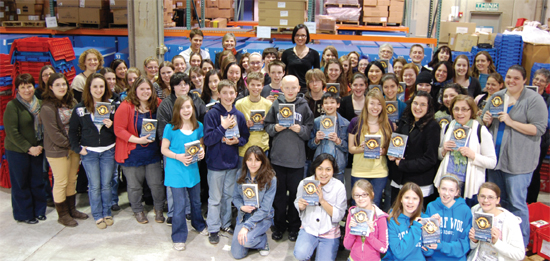
A group of enthusiastic readers with Veronica Roth (center) at Anderson’s Bookshop in Chicago.
Burger, Summit, and Red Wagon all shared a vision for the film version of Divergent. Even though it was set in the future, they all wanted the movie to feel current and relevant, as if it was really about now.
Once Burger signed on to direct—and began assembling a team that included a director of photography, a production designer, a location manager, a costume designer, and so forth—the whole group needed to articulate what that vision would really mean. Where would they make the movie? What would it look like? Who would the actors be? Preparing to shoot the film would take much longer than the shoot itself, as the team would plan every scene to the smallest detail.
The story would be told through dialogue, of course, rather than the narration of the novel. Screenwriter Evan Daugherty had already condensed a nearly 500-page novel into the 130-page script that would serve as Burger’s road map. But before Burger could get to the work of directing actors in performing that script, he would need to find ways to expand and extend all the visual detail that Roth had described in her book.
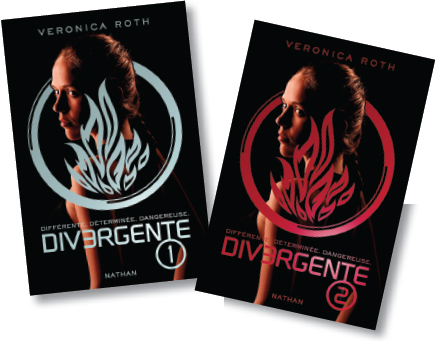
French editions of Divergent and Insurgent.
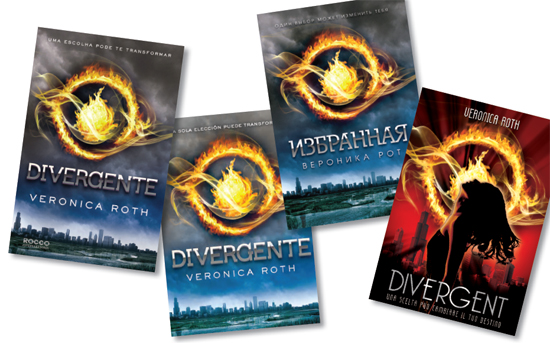
Four of the thirty foreign editions of Divergent: (L to R) Brazil, Spain, Russia, and Italy.
Early on, soon after the film rights were sold, Roth had met with producer Wick. At that point, she was less than a year out of college and on the verge of a kind of success that most people her age could only imagine. Roth remembers, “I wasn’t sure what to expect, but he was just so nice and so concerned about other areas of my life, like what it felt like to have this happen when I was only twenty-two. It felt like he was concerned about me as a human being, and that went a long way toward making me feel comfortable handing over my work to be interpreted by someone else.”
When the time came to expand on what she had written, then, Roth “had a little conversation with myself about ownership. When I write the story and it’s just in my computer, I’m the one who owns it. I control everything about it. But then when the book gets released, it suddenly belongs to millions of other people who are reading it. So that transfer of ownership happens from the second other people start reading the book. And it’s the same with the movie. The story now belongs not just to me, not just to the readers, but also to the director and to every actor they cast.”
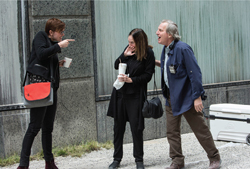
On the Divergent set with author Veronica Roth and producers Lucy Fisher and Doug Wick.
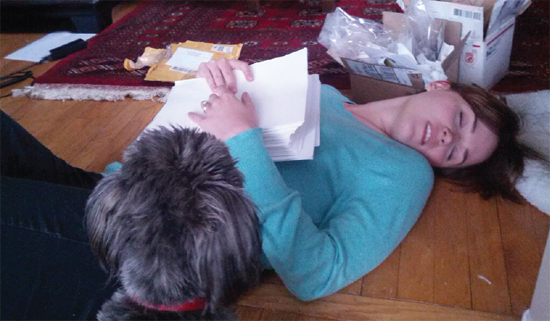
Author Veronica Roth is crushed by her editor’s notes on the massive Allegiant manuscript.
THE DETAILS EMERGE
By the time Burger consulted Roth about some of the details, Roth was well into writing Allegiant, the third book in the Divergent trilogy. She knew how Tris’s story would turn out, and she also knew more about what had happened, long ago, to create her dystopian society in the first place. Roth spoke at length with Burger about this backstory and shared information that no one but her editors knew yet. “I spoke with Neil about the surrounding world, and what had led to the city being created. He needed to know if he should depict any kind of destruction, and where it should be, and why it was there. I think Neil probably knows the most secrets of anyone,” Roth says. Still, Burger was curious about details she had never even considered.
She continues, “Neil asked me a lot of ‘detail’ questions, ones that Tris was unlikely to answer in the narrative—how does commerce work in each faction? Do the factions ever work together? What does that look like? Would there be any Amity present on Visiting Day? What kind of physical destruction is present in the city? Like that. In a movie, more so than in a book, you can show the world of a story in brief but significant ways—a shot of people walking down the street, for example, can contain a wealth of information. Neil wanted to make sure that the world surrounding the narrative made sense, that there weren’t any inconsistencies in the world-building, and that the world was rich. I’m not a big ‘describer,’ so seeing someone take my sparse settings and make them beautiful and detailed was . . . inspiring. Incredible.”
With Roth’s help, Neil Burger came to a basic understanding of the kind of society he would be showing on film. It would be about 150 years in the future, but a hundred years after an event that caused all technological advances to stop. Burger and his production team would need to imagine fifty years from now, and then decide what might be left over a century after that. What kinds of structures could withstand that test of time? What could be created from the few remaining raw materials the people had? None of these details were spelled out in Roth’s novel, but the filmmakers would use them as background as they began to make decisions about design.
The story is set in Chicago, a city of millions of people, but in Roth’s future city there are only about thirty thousand people. “They’re occupying this grand, slightly abandoned place,” says director Burger. “They keep up the areas that they use, but then there’s a vast area of the city which is kind of crumbling and falling apart. When we see the city, we just see people walking in the middle of the streets, because they don’t have cars. There are a few trucks around, but mostly their transportation is on foot or on train.” He and Roth even discussed what people in this city might use for power. If they had it, how did they get it? Eventually, he came to the idea that there could be wind turbines on the sides of some buildings and power cables swooping between them.
Roth smiles when she remembers some of her discussions with the filmmakers. “When I wrote the book, I was mostly concerned with Tris’s internal life, and she doesn’t notice all the details. She’s not a big describer of settings so, you know, I wasn’t thinking about what the chairs looked like or the needles looked like. I would never have been able to imagine all of that. Neil Burger has been one of the most detail-oriented and thoughtful people I have met through this whole experience. Talking to him, I’m sometimes like ‘I wish you had been here while I was building this world, because I think it would have been a little more fully realized if you had been around.’ He’s just so concerned with every little piece of the society and with representing it properly, even in the background.”
Конец ознакомительного фрагмента.
Текст предоставлен ООО «ЛитРес».
Прочитайте эту книгу целиком, купив полную легальную версию на ЛитРес.
Безопасно оплатить книгу можно банковской картой Visa, MasterCard, Maestro, со счета мобильного телефона, с платежного терминала, в салоне МТС или Связной, через PayPal, WebMoney, Яндекс.Деньги, QIWI Кошелек, бонусными картами или другим удобным Вам способом.
Вы ознакомились с фрагментом книги.
Для бесплатного чтения открыта только часть текста.
Приобретайте полный текст книги у нашего партнера:
Полная версия книги
